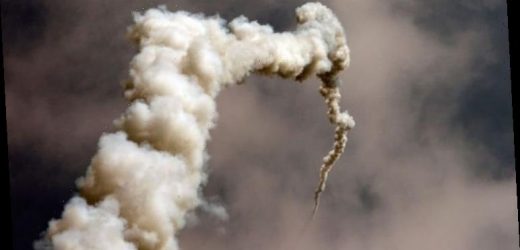SpaceX show the Falcon 9's first stage landing
The last year saw an astonishing array of scientific experiments and audacious missions taking place in space. And 2021 promises to be even more exciting, with SpaceX, NASA and states such as China all accelerating their space programs – here is what you can expect over the coming year.
Early 2021: Starship SN9 test
The Elon Musk-owned SpaceX expects to send the next numbered Starship on its way in the coming weeks.
SpaceX’s trio of powerful Raptor engines are attached and Starship SN9 has already been wheeled onto the launchpad, suggesting the pioneering company’s prototype could possibly launch later this month.
February 18: NASA Perseverance rover lands on Mars
NASA’s Perseverance is scheduled to land on Mars on Thursday, February 18 at approximately 8.30pm GMT (3.30pm ET).
Perseverance will first have to survive the notorious Seven Minutes of Terror, where it rapidly slows from 12,000mph to a total halt on the rusty-red surface in a mere 420 seconds.
This marks only the start for a remarkable year for Martian exploration, with a Chinese rover and lander also expected to arrive later on in the year.
JUST IN: Black hole goes ‘missing’ from the centre of distant galaxy Abell
We will use your email address only for sending you newsletters. Please see our Privacy Notice for details of your data protection rights.
March 29: Boeing Starliner OFT-2 launch
Boeing’s cone-shaped CST-100 Starliner spacecraft has been designed to deliver astronauts to the International Space Station (ISS) as part of NASA’s Commercial Crew Program.
However, last month’s first orbital flight test experienced an “anomaly” with the spacecraft’s clock, meaning CST-100 did not reach the ISS as planned and instead abruptly returned to Earth two days later.
But should this launch go according to plan, this should pave the way for astronauts to be launched within the Boeing capsule later in the year.
April/May: China Tianwen-1 rover lands on Mars
Tianwen-1, China’s triple threat mission to Mars, left Earth in July 2020 and is scheduled to insert itself into Mars orbit in February.
However, China will not attempt a touchdown for a couple more months, with industry insiders pencilling-in late April or early May for the historic event.
June: Boeing crewed test flight
Provided everything works out exactly as hoped in March, the first crewed test flight of Boeing’s Starliner could launch for the ISS this June.
Similar to SpaceX’s Demo-2 mission in 2020, this would be the final check for Boeing’s spacecraft before Boeing’s capsule becomes fully operational.
July 22: NASA launches DART asteroid mission
US-based space agency NASA’s mission to crash into an asteroid should kick-off in July as it heads toward space rock 68503 Didymos.
This rogue space rock boasts a small twin in its orbit, dubbed Dimorphos.
NASA’s eagerly-anticipated Double Asteroid Redirection Test will crash into this smaller Great Pyramid-sized asteroid.
This will be followed by a European Space Agency mission, scheduled for launch in 2024.
This is intended to study the impact crater and how it changed Dimorphos’s orbit and properties.
DON’T MISS
Brian Cox exposed how Einstein’s theory ‘breaks down’ [REPORT]
NASA gets into shopping spirit with ‘Black Hole Friday’ [INSIGHT]
Teeming’ life could be hiding in spacetime [ANALYSIS]
October 16: NASA Lucy launch
One of the most ambitious missions on NASA’s 2021 calendar is known as Lucy – an ambitious attempt to visit eight asteroids over the next 10 years.
Lucy will hopefully become the first mission to study a group of asteroids near Jupiter known as the Trojans.
The mission is named after the fossilised remains of an ancestral human discovered in Ethiopia, which rewrote the history books on human evolution.
October 31: NASA James Webb Telescope launch
NASA’s long-delayed next-gen space telescope – the planned successor to the Hubble Space Telescope – will likely launch in October.
James Webb is a major upgrade to astronomers’ capabilities in studying the early universe, and once operational it should soon be able to peer into the earliest galaxies ever formed.
Source: Read Full Article







